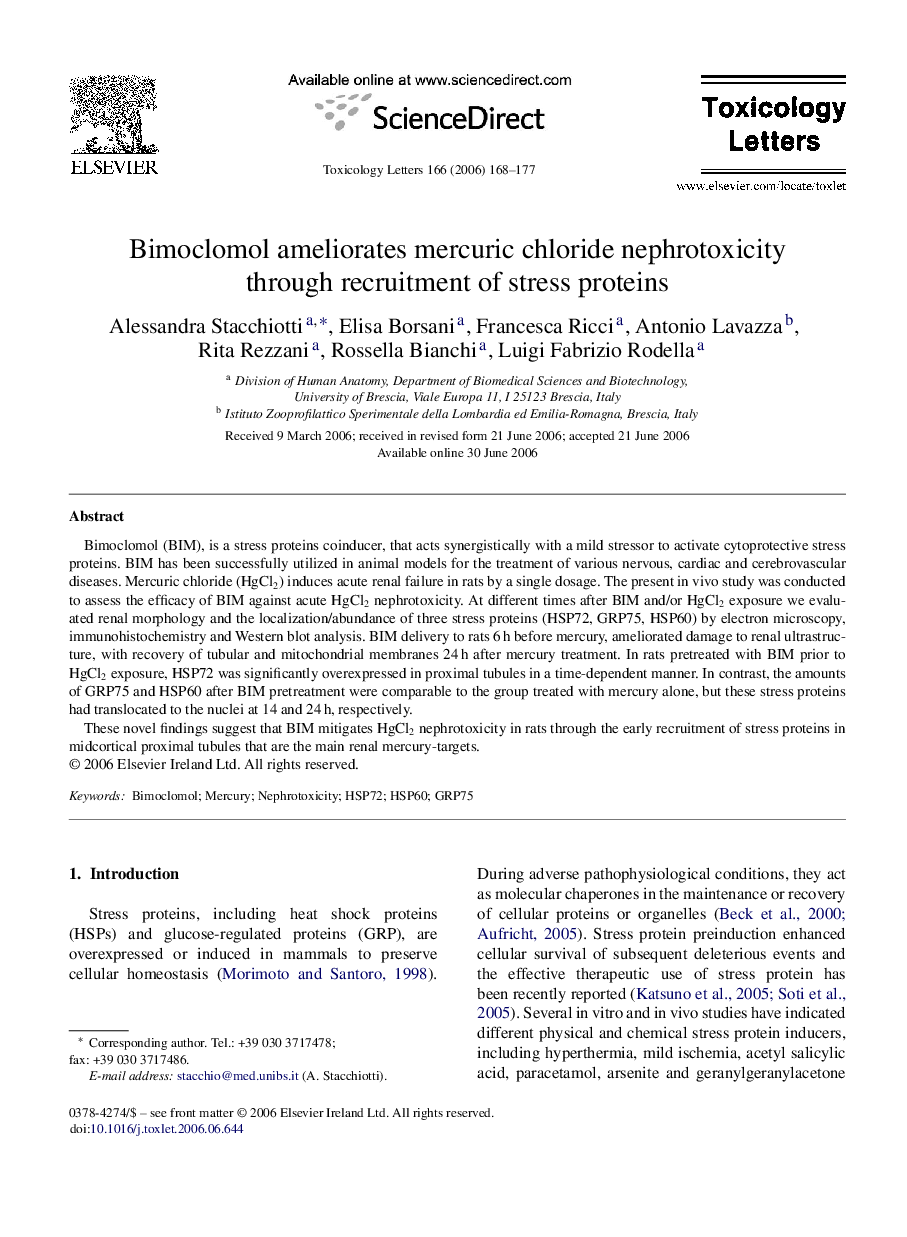| Article ID | Journal | Published Year | Pages | File Type |
|---|---|---|---|---|
| 2601626 | Toxicology Letters | 2006 | 10 Pages |
Bimoclomol (BIM), is a stress proteins coinducer, that acts synergistically with a mild stressor to activate cytoprotective stress proteins. BIM has been successfully utilized in animal models for the treatment of various nervous, cardiac and cerebrovascular diseases. Mercuric chloride (HgCl2) induces acute renal failure in rats by a single dosage. The present in vivo study was conducted to assess the efficacy of BIM against acute HgCl2 nephrotoxicity. At different times after BIM and/or HgCl2 exposure we evaluated renal morphology and the localization/abundance of three stress proteins (HSP72, GRP75, HSP60) by electron microscopy, immunohistochemistry and Western blot analysis. BIM delivery to rats 6 h before mercury, ameliorated damage to renal ultrastructure, with recovery of tubular and mitochondrial membranes 24 h after mercury treatment. In rats pretreated with BIM prior to HgCl2 exposure, HSP72 was significantly overexpressed in proximal tubules in a time-dependent manner. In contrast, the amounts of GRP75 and HSP60 after BIM pretreatment were comparable to the group treated with mercury alone, but these stress proteins had translocated to the nuclei at 14 and 24 h, respectively.These novel findings suggest that BIM mitigates HgCl2 nephrotoxicity in rats through the early recruitment of stress proteins in midcortical proximal tubules that are the main renal mercury-targets.
